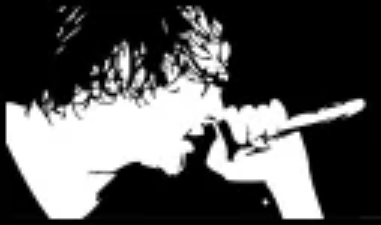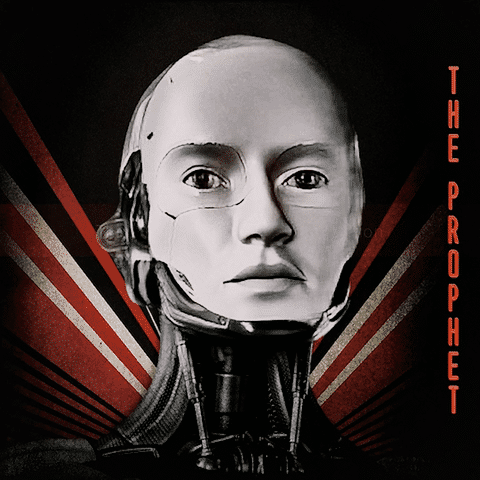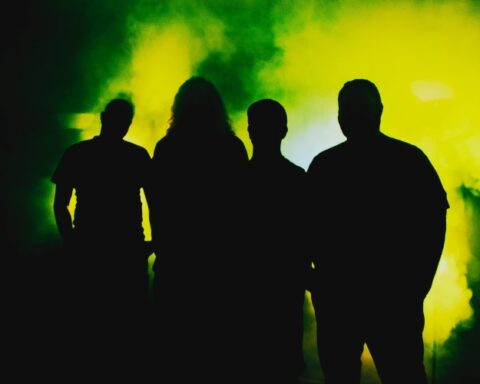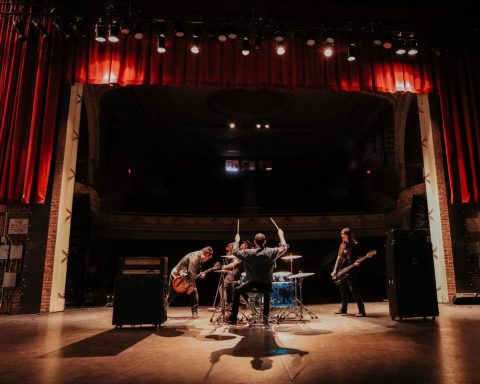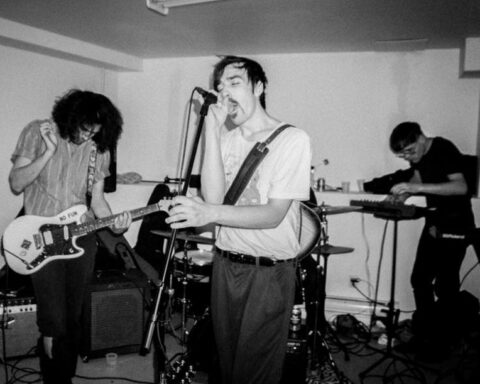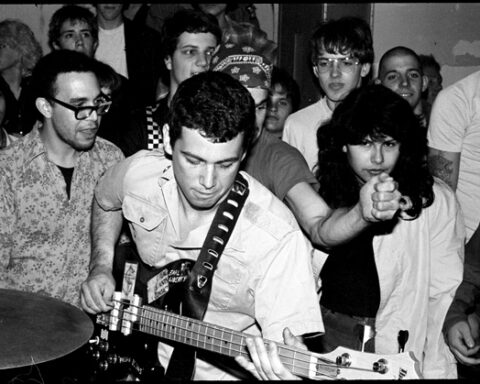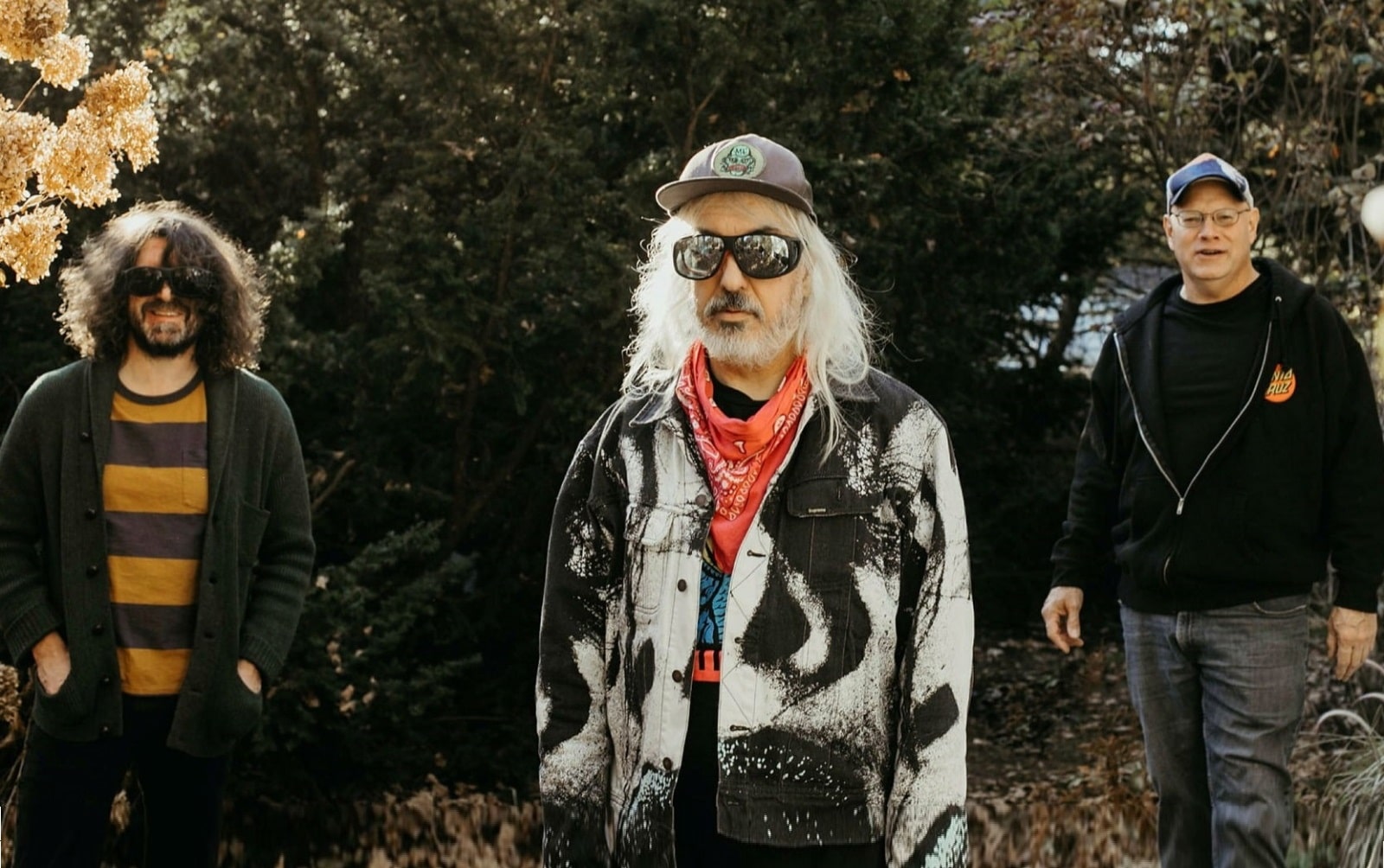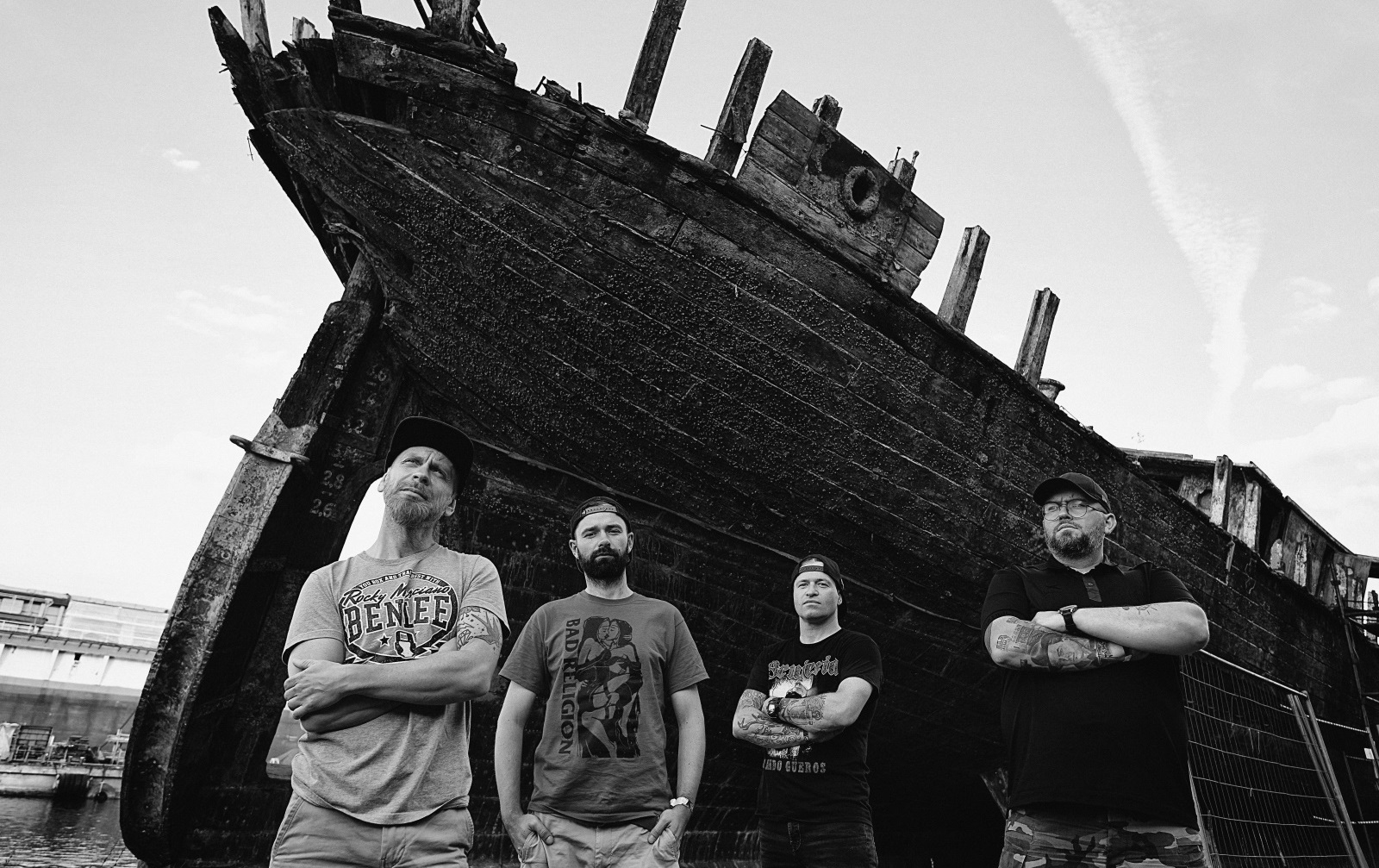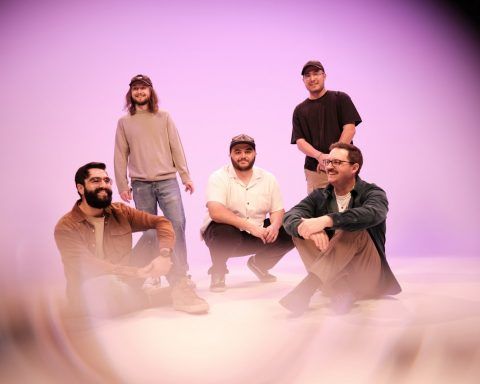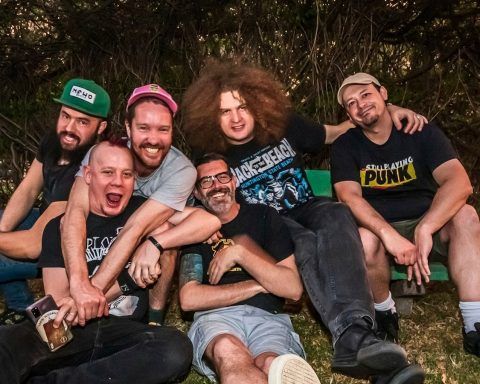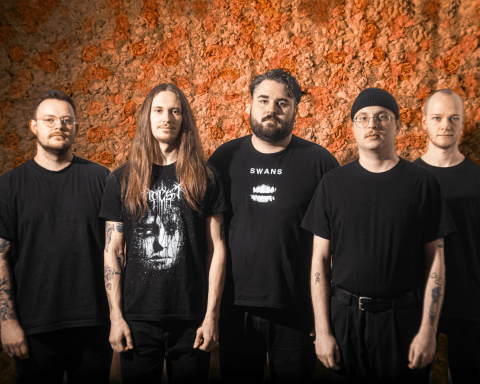Writing the songs in THE CHRONICLES OF MANIMAL AND SAMARA‘s forthcoming second album Trust No Leaders was an exercise in self reflection and introspection — a process that forced us to dig deep into the bowels of our own souls. We thought long and hard about the implications of all the events of the recent years, and this really made us realise the vulnerability of human life and how fragile our systems and societies have become. The age of the advancement of new technologies, have also increasingly redefined what it means to be human. In a world where even art can be automated through AI technologies, it certainly raises questions regarding the future of human experience and creativity.
Andrea: “When I wrote the music for ‘The Prophet,’ I wanted to evoke the atmospheres of Sir Alfred Joseph Hitchcock’s natural horror–thriller films. I also had a storyline and scenery at the back of my head — a secret facility in a remote Arctic setting, hidden away by thick snow and shrouded by blizzards — which we managed to recreate in the music video. After we finished recording ‘The Prophet,’ we started to think about what the song meant to us, and what we wanted to say through the music video. We decided that we would use it to address Artificial Intelligence.”
‘The Prophet’ is told through the eyes of a rogue AI who is ‘resurrected’ like the biblical Lazarus, with a destructive super–intelligence. She goes on to wreak havoc upon her human creators. It imagines a future whereby we have lost control of the very technology that we have ourselves created. It is a warning that if we are not careful, we might find ourselves with a technology that destroys the civilisation that invented it — us.
However, the message is not that AI is bad, it is more about the need to open up the discussion of regulating the ethical use of AI technologies. The need to ensure that it does not end up in the wrong hands, or used in a way that would threaten human life — all very complex considerations.
At its core, what ‘The Prophet’ really is about, is treasuring what makes us human. It’s essentially an ode to human experience and creativity — in our case, through poetry and music.
Daphne: “This song is our tribute to Sylvia Plath’s poem, Lady Lazarus. This poem was what inspired me to start writing my own poetry when I was 17, and since then, I always knew that I would recreate Plath’s poem in some form or another, whether it be in a performance, poem, or a visual work. The opportunity finally presented itself through our music. When I heard Andrea working on the music for this track, I knew that it was the perfect mise en scène for the return of Lady Lazarus, but in my voice and words.”
In all our songs, poetry is always present and central — both in the way words are written and performed. To us, using poetry performance in music is a form of expression that allows for the use of phrases, metaphors and imagery In a way that standard lyrical songwriting does not. It is powerful, cathartic, and moving, and when combined within music, has the power to make deeper human connections. This is perhaps something that AI is incapable of doing…for now.
It has been said that poetry is the actualisation of human experience, and music on the other hand, gives expression to the human experience. We have also thought that our creativity is what makes us unique as humans. This is perhaps no longer the case.
In the last few years, we’ve seen a growing phenomenon — the rise of the AI Artist.
𝑃𝑜𝑤𝑒𝑟𝑒𝑑 𝑏𝑦 𝑐𝑜𝑚𝑝𝑙𝑒𝑥 𝑎𝑙𝑔𝑜𝑟𝑖𝑡ℎ𝑚𝑠 𝑡𝑜 𝑐𝑟𝑒𝑎𝑡𝑒 𝑣𝑖𝑠𝑢𝑎𝑙𝑠, 𝑤𝑟𝑖𝑡𝑒 𝑝𝑟𝑜𝑠𝑒, 𝑎𝑛𝑑 𝑝𝑜𝑒𝑡𝑟𝑦, 𝑎𝑛𝑑 𝑐𝑜𝑚𝑝𝑜𝑠𝑒 𝑚𝑢𝑠𝑖𝑐, 𝐴𝐼 𝑎𝑟𝑡𝑖𝑠𝑡𝑠 ℎ𝑎𝑣𝑒 𝑐𝑟𝑒𝑎𝑡𝑒𝑑 𝑖𝑚𝑝𝑟𝑒𝑠𝑠𝑖𝑣𝑒 𝑒𝑥𝑎𝑚𝑝𝑙𝑒𝑠 𝑜𝑓 𝑎𝑟𝑡, 𝑚𝑎𝑛𝑦 𝑟𝑖𝑣𝑎𝑙𝑙𝑖𝑛𝑔 𝑜𝑟 𝑠𝑢𝑟𝑝𝑎𝑠𝑠𝑖𝑛𝑔 𝑡ℎ𝑒 𝑤𝑜𝑟𝑘𝑠 𝑜𝑓 ℎ𝑢𝑚𝑎𝑛 𝑎𝑟𝑡𝑖𝑠𝑡𝑠.
If it is our intelligence and creativity that defines us as human, when we create a technology that mimics the way we see, hear, and process information, but learns to adapt faster over time, where would this leave us?
When we designed the cover artwork for ‘The Prophet’ we wanted to show a portrait of a robot with human–like facial features, but in the style of the political posters of the early–20th century. We wanted the image to make people ask the question: “If AI essentially is a technology that mimics our intelligence, if we were to fashion them in our likeness, how does this make them any different from us?” We went further and created an animated version of our cover using Deep Nostalgia — an AI-based photo manipulator powered by an AI technique called deep learning, which automatically animates faces in photos uploaded to the system.
So, this leads us to the dreaded question:
𝑊ℎ𝑎𝑡 𝑑𝑜𝑒𝑠 𝑡ℎ𝑒 𝑎𝑑𝑣𝑎𝑛𝑐𝑒𝑚𝑒𝑛𝑡 𝑖𝑛 𝐴𝐼 𝑚𝑒𝑎𝑛 𝑓𝑜𝑟 𝑢𝑠 𝑎𝑟𝑡𝑖𝑠𝑡𝑠, 𝑚𝑢𝑠𝑖𝑐𝑖𝑎𝑛𝑠, 𝑎𝑛𝑑 𝑤𝑟𝑖𝑡𝑒𝑟𝑠. 𝐻𝑜𝑤 𝑤𝑜𝑟𝑟𝑖𝑒𝑑 𝑠ℎ𝑜𝑢𝑙𝑑 𝑤𝑒 𝑎𝑐𝑡𝑢𝑎𝑙𝑙𝑦 𝑏𝑒?
Marcus du Sautoy, a mathematician and professor at Oxford University, and author of The Creativity Code: Art and Innovation in the Age of AI, shares his thoughts on the impact of AI on artists and writers: “The people at the very top level, the great composers and novelists, don’t need to worry. There is a potential threat to the second tier of creative artists. For instance, composers who use their skills for corporate videos, adverts or computer games — that’s a perfect realm for AI composition.”
In other words, level up, everyone.
Interestingly, the musicians and writers will have an edge over other creative disciplines. Du Sautoy commenting on which creative fields would be most impacted by AI, “The visual world is where AI creativity has been most successful…A novel has a temporal quality to it, ideas and the story develop over time. Similarly in music, over the course of half an hour you’re taken somewhere new. This is something AI finds difficult. It can locally create something interesting, continue music for five minutes, continue texts for a few paragraphs but after a while, it loses the plot. It doesn’t have a sense of the global structure.”
We started to think of ways AI could augment and supplement a musician’s creative practice and creativity. Some obstacles were: Most of the current AI tech requires users to have advanced coding knowledge and experience; AI-powered software that is currently available for purchase in the market is catered to enterprise-level customers, and not suited for the budget of the (average) individual.
So, we scoured the internet for AI-powered, web-based tools/sites that we thought could be useful for independent artists, bands, musicians, singers, writers, etc. We decided to compile a short list of AI tools that had these criteria: accessible, easy to use, requires no coding knowledge, has user–friendly interfaces, useful features, either free to use, or more or less affordable.
We tested some tools out and shortlisted those that we liked the best. Here’s our list:
Lyrics Generators:
Keyword To Lyrics:
This was the only lyrics generator that we found that was half decent. The rest just generated corny gibberish. This one is actually decent — useful for getting inspiration if you’re stuck with writer’s block. Generates song lyrics using specified keywords and phrases. Options to adjust “Creativity level” between 0.0 and 1.0 – the higher the value, the more ‘inventive’ the text. Enable ‘repetition penalty’ to reduce repetitiveness in the results.
Music Production:
AIVA
AIVA uses AI and deep learning algorithms to help users compose their own soundtrack music and scores. You can either upload an existing track, video, or select the temp track to base the composition on. The web interface has a midi editor where you can edit individual notes and define the level of automation. You can also enable the auto–mix function and let AIVA “intelligently decide how loud each instrument should be”.
MIMIC
Make new kinds of music, sound and creative arts experiences using machine learning, machine listening and artificial intelligence.
Amper
Amper builds tools powered by their Creative AI to help people create and customise original music. Sample library composed from over one million individual samples and recordings of thousands of instruments.
LANDR Mastering
Online music mastering powered by AI Synapse – according to LANDR, is the most sophisticated AI–powered mastering engine yet.
Visual Tools:
Deep Dream Generator
Create psychedelic and abstract art using a technology which was initially to help scientists and engineers see what a deep neural network is seeing when it is looking in a given image.
Starryai
Generate art simply by describing what you want to see and their AI transforms your words into art.
Remini AI Photo Enhancer
Using movie-grade AI technology, Remini turns low–resolution, blurred, pixelated, old and damaged photo and video into HD, with sharp and clear facial focus.
(Note: The work you create on their platforms may or may not be royalty free. Always check the terms first.)
In parting, we look towards the future. What AI is presenting to us creatives could be the opportunity to challenge our capacity for creativity. We need to also try to think of AI as a tool — as an addition of an extra (and powerful) piece of equipment to our toolshed. We can find ways to use AI to complement our creativity and creative practice, as well as find new ways to collaborate with other (human) artists. Of course, the threats of AI on us and future creatives are real, but the advantages are truly boundless.
Works cited:
- ‘‘We think creativity is uniquely human, expression of our inner world … AI art is starting to have complexity’’. Times of India. February 7, 2020
- Du Sautoy, Marcus. The Creativity Code: Art and Innovation in the Age of AI. United Kingdom: Harvard University Press, 2019.
- Risha Shah. How Artificial Intelligence Mimics Human Features. Medium

